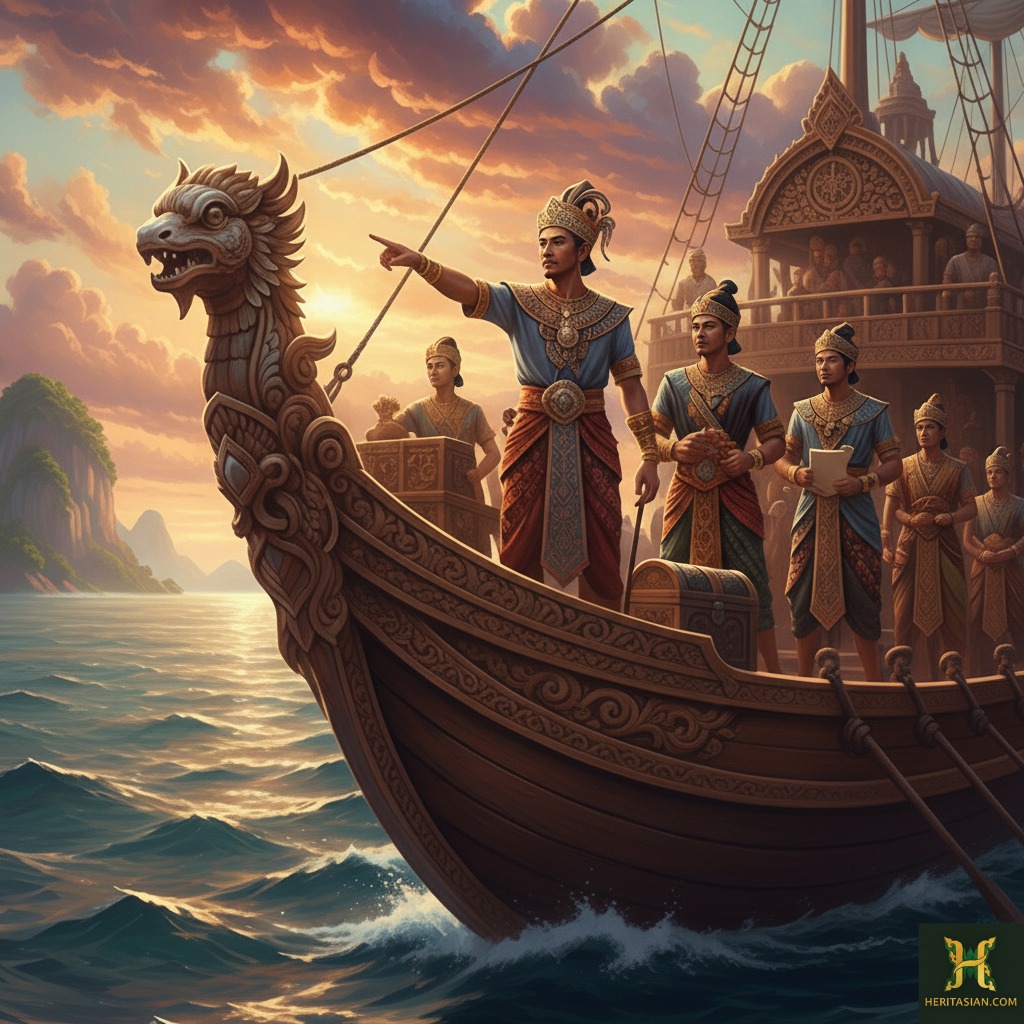This isn’t just a stretch of water. It’s history’s high tide. The Strait of Malacca stretches nearly 900 kilometres, a crucial shipping funnel located in South East Asia. Today, this narrow channel carries roughly one-quarter of all global commerce. For two millennia, empires and fortunes rose and fell on its currents.
Travellers today don’t simply sail a route. They trace a legend. Modern cruisers and superyachts follow the same natural channels once navigated by Chinese vessels and galleons. The voyage through the Strait of Malacca is an instant connection to history. It’s a journey along the coast of the Malay Peninsula, from the modern metropolis of Singapore to the UNESCO-listed heritage port of Melaka, and the pristine island retreats of Langkawi and Phuket. These destinations, now paragons of luxury travel, were once the flashpoints of global power.
The Ancient Masters and the Islamic Catalyst: Palembang to Malacca
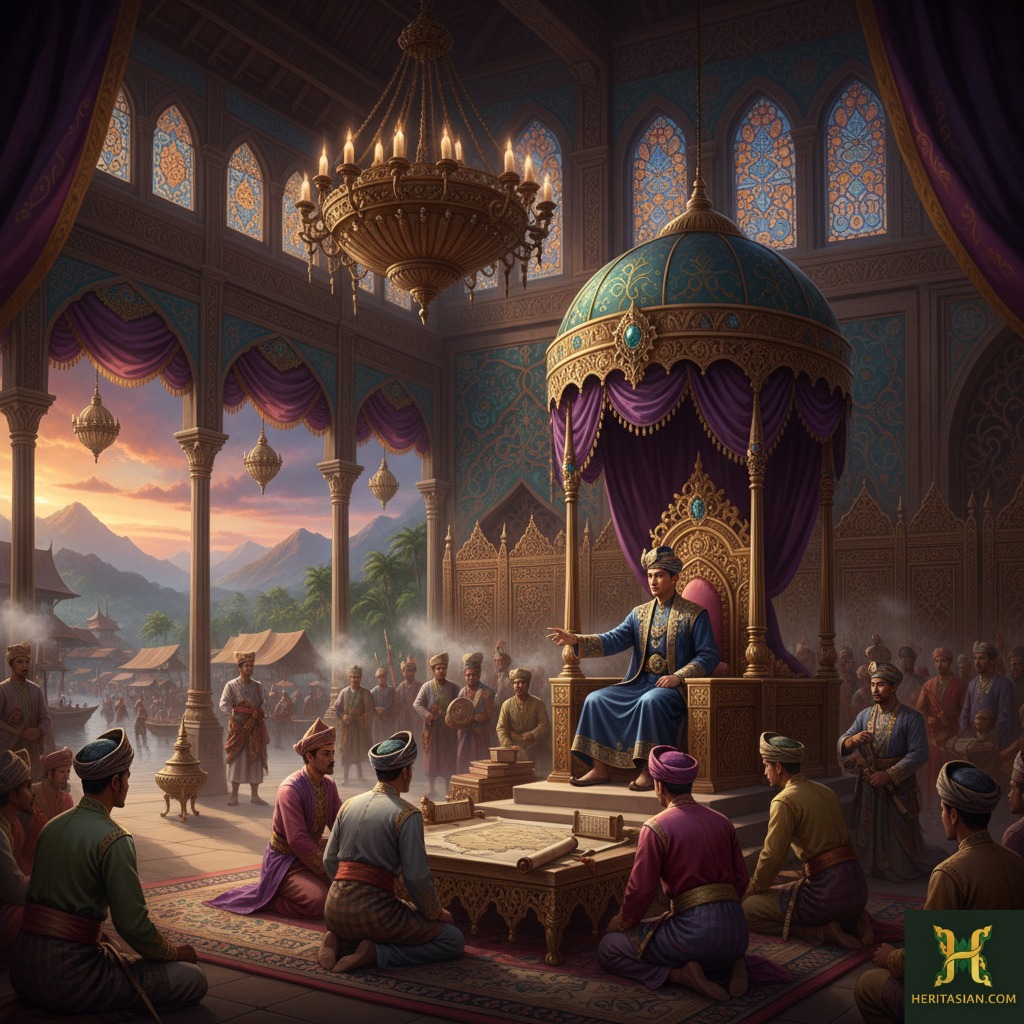
Long ago, powerful regional rulers mastered this maritime space. The Straits belonged to them.
The Srivijaya kingdom, starting in the 7th century, perfected the art of the thalassocracy—rule by sea. Their navy was efficient and formidable. They relied on the Orang Laut (Sea People). These nomadic communities were more than just sailors; they were Srivijaya’s loyal, highly effective coast guard. Their intimate knowledge of the tides ensured safe passage for trade. The wealth was immense. It funded the capital, Palembang, as a centre for Buddhist learning. Scholars arrived from as far as India and China. Early globalisation was already thriving.
The true commercial zenith came later. The Malacca Sultanate, founded in the early fifteenth century, controlled the perfect natural harbour. Its success was immediate. The key element arrived quickly: Islam. The ruling elite’s conversion was a strategic masterstroke. Malacca plugged directly into the massive, trusted Muslim merchant network. This network stretched from the Arabian Sea, through the Indian Ocean and onwards to the South China Sea. Shared faith created a commercial bond. It provided an “Islamic umbrella” of law and trust (aman).
Administration was brilliantly streamlined. Four Syahbandar (harbour masters) managed the diverse merchant groups. This system cut friction; it accelerated exchange. Political security was also guaranteed. The Sultanate cemented an alliance with Ming China. Admiral Zheng He’s colossal treasure fleets visited repeatedly. This reinforced Malacca’s status. The city quickly became cosmopolitan. Over 80 languages were reportedly spoken in its markets. Tomé Pires, the Portuguese chronicler, captured its global importance vividly. He wrote that the person who controlled Malacca “has his hand on the throat of Venice.” Its grip on global shipping and spice flow was absolute.
The European Contestation: Imperial Ruins and Modern Revival
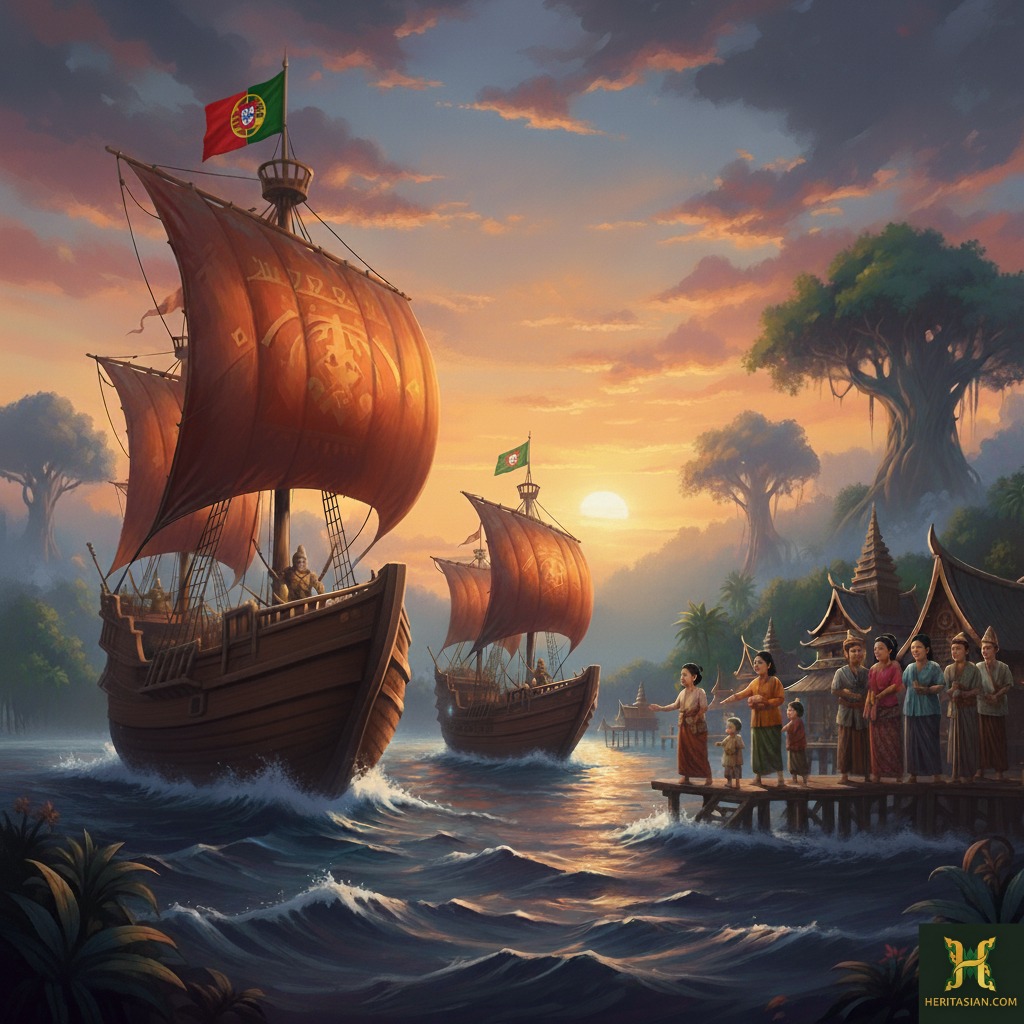
The staggering wealth of the Malacca Sultanate proved an irresistible magnet, initiating centuries of brutal European rivalry. This conflict permanently reshaped the region, replacing local trust with colonial command.
Portuguese Malacca: Seizure and Stagnation
In 1511, the era of European domination began violently. A large Portuguese fleet, led by Afonso de Albuquerque, captured Malacca after a devastating siege. The motive was dual: commercial and religious. Albuquerque aimed to seize control of the spice trade and simultaneously strike a blow against the established “Moorish” (Muslim) trading network. He wasted no time. Albuquerque immediately dismantled the Sultan’s palace and built the fortress A Famosa (The Famous). This was a bold display of power.
But the victory quickly proved counterproductive. The Portuguese, focused on monopoly and fuelled by religious hostility, imposed high tariffs. This aggression broke the established trade system. Instead of submitting, the powerful Muslim merchants simply diverted their business. They routed around Malacca, finding refuge and support in the rival Sultanate of Aceh and the successor state, the Sultanate of Johor-Riau. The Portuguese ruled for 130 years, but their city declined from a dynamic, global hub to a fortified, isolated military outpost. Tomé Pires’s famous boast—that Malacca’s controller held “the throat of Venice”—soon rang hollow.
Dutch Shipping Supremacy in the Malacca Strait
The Portuguese dominance ended in 1641. The mighty Dutch East India Company (VOC), a powerhouse of corporate might, seized Malacca after a devastating six-month siege. The VOC’s aim was pure profit: securing a total monopoly over the lucrative spices of the archipelago.
The Dutch achieved victory only by forging a strategic alliance with the Sultanate of Johor-Riau. This partnership showed the influence of the local Muslim authority. After the conquest, the Dutch treated Malacca as a strategic choke-point for military ships, governing their empire from Batavia (Jakarta). They maintained high tariffs and strict controls to protect their pepper, clove, and nutmeg trade. This policy, designed to enforce a cartel, ultimately stifled Malacca’s commerce further. The port stagnated, remaining militarily strong but economically lethargic. This neglect unintentionally created the perfect opportunity for the arrival of the next, and final, great European power: the British.
Travel Connection: Experience the Ruins and Revival in the Strait of Malacca
Today’s luxury traveller experiences this history firsthand in Melaka City (Malacca, Malaysia). You walk the same streets. You can climb St. Paul’s Hill to see the weathered ruins of A Famosa, a poignant reminder of the 1511 siege. Directly below, the distinctive red architecture of the Dutch Square (the Stadthuys) offers a preserved architectural experience of the subsequent, more bureaucratic colonial era. These sites aren’t just ruins; they are tangible markers of the ruthless competition that once defined the Strait.
The British Imperative: Singapore’s Metropolis and Penang’s Pearl
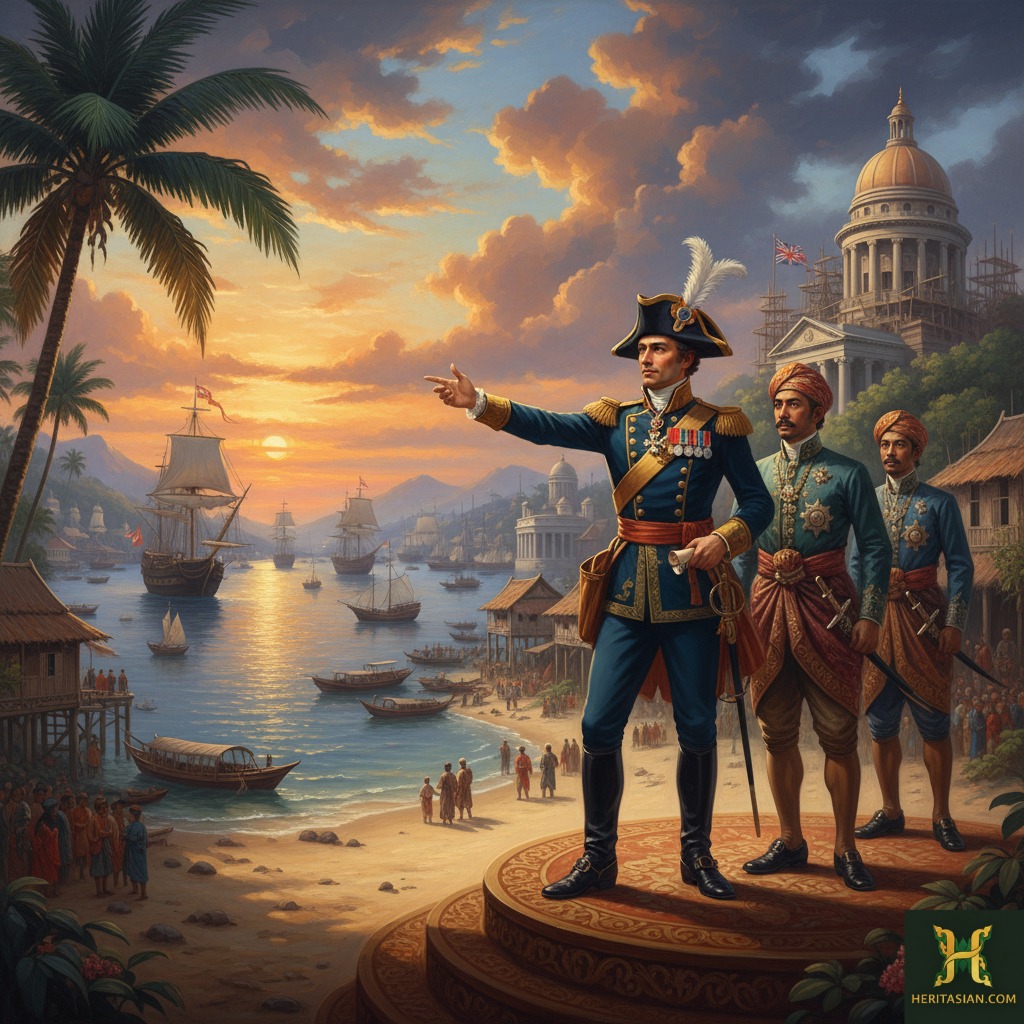
The stagnant state of Dutch Malacca offered the British East India Company (EIC) an irresistible strategic opening. They needed a new, unburdened port to safeguard their booming trade between India and China.
Sir Stamford Raffles and the Founding of a Shipping Free Port
The man who seized this moment was Sir Stamford Raffles. He recognised that the Strait of Malacca’s southern tip was strategically perfect. In 1819, Raffles gambled on the largely swampy island of Singapore. He quickly outmanoeuvred the Dutch, striking a treaty with the local chiefs and installing Tengku Hussein as the rightful Sultan of Johor. This was a political coup.
Raffles’s masterstroke, however, was his economic policy: declaring Singapore a “free port” for merchants. He imposed virtually no tariffs or duties. Trade exploded immediately. Merchants—especially the powerful Chinese junk fleets—flocked to Singapore, routing ships around the costly Dutch ports. The population, barely 1,000 upon his arrival, quickly multiplied. Singapore became the indispensable southern terminus of the global trade network.
Raffles’s 1822 Town Plan strategically guided this growth. He planned a segregated settlement to manage the massive influx of migrants. Crucially, the plan designated Kampong Glam as the quarter for the Malay, Bugis, and Arab communities. This acknowledged the enduring and essential role of the Islamic trading sector. Influential Arab merchant families, such as the Aljunieds and Alsagoffs, were key financiers and landholders under the new colonial system. The magnificent Sultan Mosque remains the architectural heart of this enduring legacy.
The Straits Settlements and Colonial Jewels
The rivalry was settled diplomatically. In 1826, the British unified their three primary acquisitions: Penang (secured in 1786), Malacca (acquired from the Dutch in 1824), and Singapore. They named this unified administration the Straits Settlements. By 1832, Singapore’s commercial dominance was so clear that the British moved the capital there.
This free-trade policy fueled a massive demographic shift known as the Great Migration. Chinese and Indian immigrants poured in to work the burgeoning tin and rubber economies. Yet, despite the new arrivals, Market Malay (Bahasa Melayu Pasar) remained the essential, fluid cross-cultural lingua franca, sustaining commerce across all three port cities.
Travel Connection: Metropolis to Heritage City
For the contemporary traveller, this section of the Strait offers spectacular contrasts. Modern Singapore—epitomised by Marina Bay Sands and its world-class airport—is the ultimate manifestation of Raffles’s free-trade vision. Luxury adventurers connect with this history by visiting the preserved shophouses and heritage sites of Kampong Glam.
Further north, Penang (George Town), the first EIC acquisition, stands as a UNESCO World Heritage City. Travellers here immerse themselves in the legacy of the Straits Settlements, where British colonial architecture blends seamlessly with temples and mosques. Penang is now globally renowned for its hybrid food culture and boutique hotel experiences—a direct result of the multicultural dynamism created by the British port system.
Peripheral Ports: The Andaman Coastline Experience
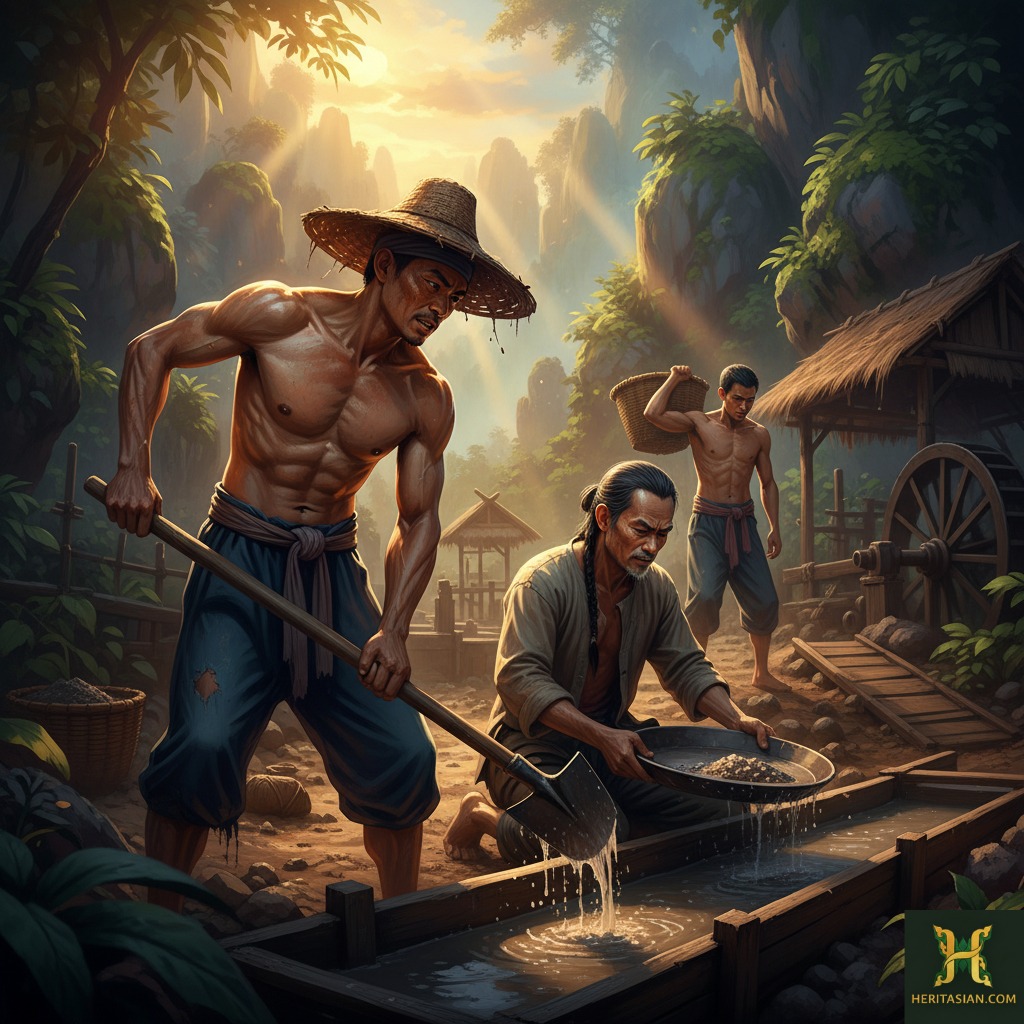
While Malacca and Singapore dominated the global artery, the northern coastline, facing the Andaman Sea, developed its own unique history and wealth, serving as a crucial periphery to the main Strait of Malacca traffic. Today, these regions offer the most exclusive, natural escapes for the modern traveller.
Phuket: The Tin Island and Sino-Thai Culture
The large island of Phuket, known historically to European traders as Junk Ceylon, lay just north of the Strait’s main shipping lanes. Its strategic importance wasn’t in transit, but in its immense mineral wealth: tin. This vital commodity fueled its economy for centuries. Phuket was a nominal vassal of the Siamese Kingdom (Thailand), which skillfully maintained its sovereignty against European ambitions.
The true boom occurred in the 19th and early 20th centuries. The tin rush attracted massive waves of Chinese immigrants, who became the island’s commercial backbone. They built the beautifully preserved Phuket Old Town, a testament to the wealth generated by the mines. The architecture here showcases a vibrant Sino-Portuguese style, a unique cultural fusion born from the convergence of Chinese enterprise and European materials.
Travel Connection: Today’s luxury traveller heads to Phuket for its world-famous beaches and resorts. Yet, a visit to Phuket Old Town connects directly to this history, allowing travellers to walk past the colourful shophouses and temples built on the fortune of tin before retreating to the natural seclusion of the Andaman coast.
Langkawi: Legends and Maritime Retreat
Located in the far north, the Langkawi archipelago was strategically a world apart. Its history is less about trade monopolies and more about refuge, allegiance, and maritime life. For centuries, its position shifted between the Malay Sultanate of Kedah and the Siamese.
The archipelago’s numerous, sheltered islands made it an ideal base. Historically, it was a preferred spot for Orang Laut and later, pirates, who could easily prey on the northern Strait traffic before vanishing into the coves. Its remoteness also meant local chiefs and nobles often used it as a secure staging ground or a place of retreat when evading the demands of central authority.
Anecdote: Langkawi is famously tied to the tragic legend of Mahsuri, a beautiful woman who was unjustly executed and cursed the island to seven generations of misfortune. This potent folklore reflects the island’s isolated and often turbulent past, distinct from the intense mercantile pressures of Malacca.
Travel Connection: Langkawi today is a serene, duty-free destination celebrated for its natural beauty and high-end resorts. Visitors experience the archipelago’s secluded character firsthand, enjoying the same pristine, secure anchorages that once appealed to ancient mariners and chiefs seeking sanctuary from the currents of history and empire.
A Heritage Highway: Fusion and the Ultimate Travel Experience
The final, and perhaps most enduring, chapter of the Strait of Malacca is written in its people. This channel forged a human legacy of seamless cultural blending—a fusion that today provides the ultimate, sophisticated travel experience across Malaysia, Singapore, and Thailand.
The Peranakan Legacy: A Taste of Fusion
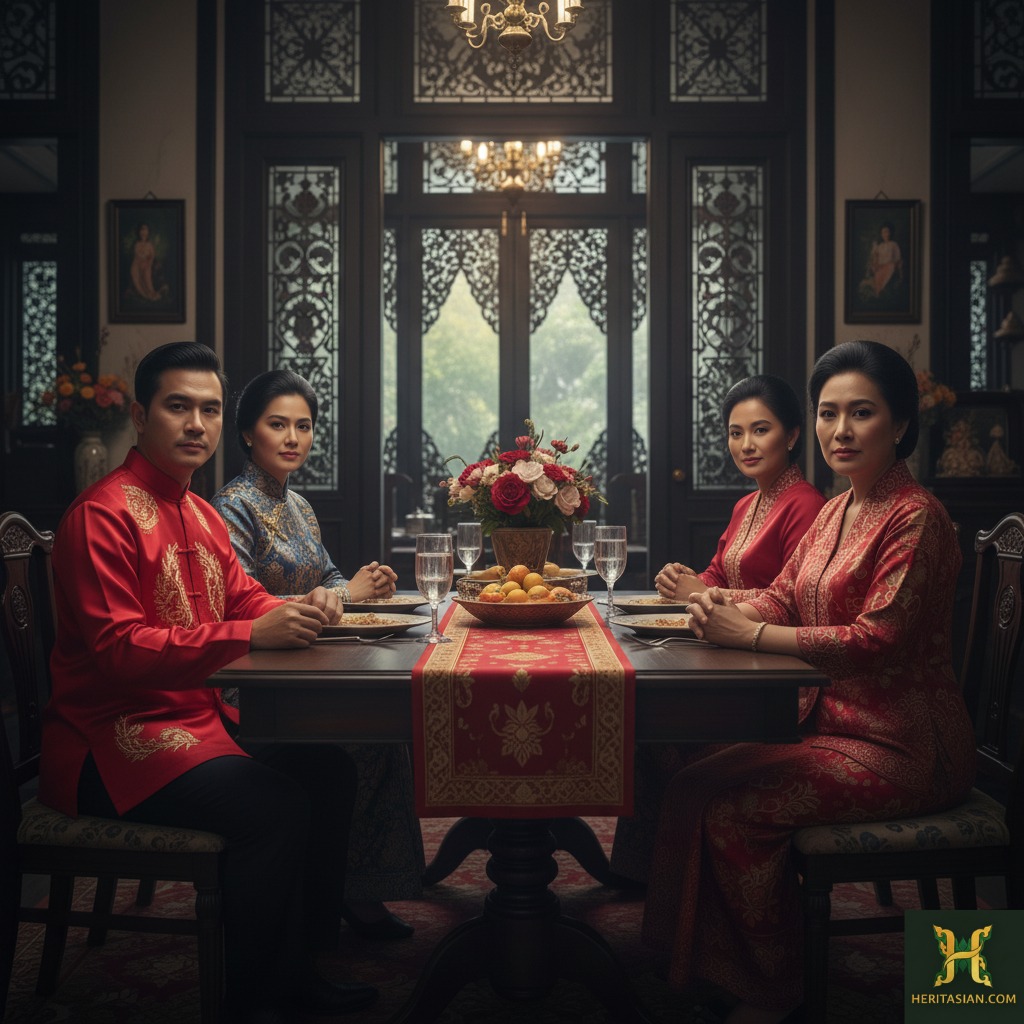
The most striking cultural outcome of the Great Migration and subsequent colonial melting pot is the Peranakan (or Straits-born Chinese) community, known as Baba (men) and Nyonya (women). This was not a simple assimilation. It was a deep, complex cultural adoption. While retaining their core Chinese ancestry, the Peranakan embraced local Malay customs, language, and style. The women’s use of the delicate Nyonya kebaya and the men’s fluency in the hybrid language, Baba Malay, are powerful social markers.
The tangible apex of this fusion is their cuisine: Nyonya food. This is not merely mixed food; it is a culinary art form. It masterfully blends Chinese cooking techniques (stir-frying, steaming) with the intense, aromatic spices and indigenous ingredients of the Malay world, like lemongrass, turmeric, and belacan (fermented shrimp paste). Finding authentic Nyonya dining in Singapore, Malacca, or Penang is to enjoy a delicious, living piece of history.
Enduring Identity and the Modern Voyage
The history of the Strait is circular. The indigenous Malay-Muslim culture, which provided the essential “Islamic umbrella” and the Market Malay lingua franca for centuries of trade, remains the cultural bedrock of the Malaysian coastline. This deep-seated stability is what allowed the subsequent multicultural explosion to flourish.
For the luxury traveller, this continuity makes the voyage unique. You aren’t just looking at history; you’re immersed in it. The Strait of Malacca today is a highly regulated, secure global artery. To sail its waters is to trace the footsteps of the greatest figures in global history—from the fleets of Admiral Zheng He to the gunships of the VOC—all while arriving at world-class destinations.
Whether enjoying the serenity of a Langkawi sunset, walking the UNESCO lanes of Penang, or experiencing the high finance of Singapore, the modern traveller is engaging in the final iteration of this 2,000-year-old tradition: a journey along the definitive link between East and West. The Strait of Malacca is a critical chokepoint of maritime trade, and its importance as a heritage highway and global lifeline will only continue to grow.
Straits of Malacca History: A Heritage Highway for the Global Traveller
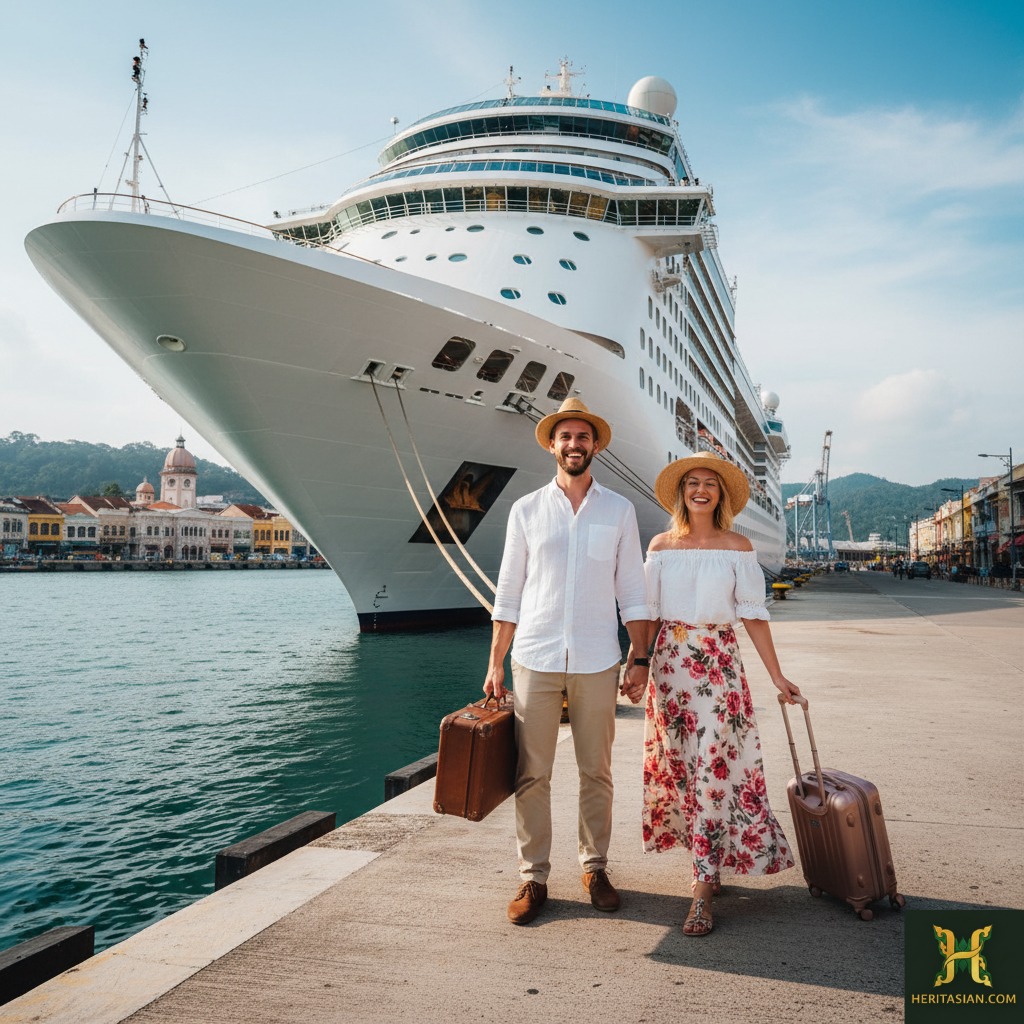
This isn’t just a stretch of water. It’s history’s high tide. The Strait of Malacca stretches nearly 900 kilometres, a crucial shipping funnel located in South East Asia. Today, this narrow channel carries roughly one-quarter of all global commerce. It is the vital link. For two millennia, empires and fortunes rose and fell on its currents.
Travellers today don’t simply sail a route. They trace a legend. Modern cruisers and superyachts follow the same natural channels once navigated by Chinese vessels and galleons. The voyage through the Strait of Malacca is an instant connection to history. It’s a journey along the coast of the Malay Peninsula, from the heritage hotels of Penang, to the modern metropolis of Singapore. From the UNESCO-listed heritage port of Melaka, to the pristine island retreats of Langkawi and Phuket. These destinations, now paragons of luxury travel, were once the very flashpoints of global power. The historical narrative isn’t static; it’s your itinerary.
Straits of Malacca History FAQS
Which ancient kingdom first mastered the Strait, and how did they control it?
The Srivijaya kingdom, starting in the 7th century, perfected the art of thalassocracy (rule by sea). They controlled the waterways using an efficient navy and relied on the Orang Laut (Sea People), nomadic communities who served as a loyal and highly effective coast guard.
How did the Portuguese chronicler Tomé Pires describe the importance of Malacca?
Tomé Pires vividly captured Malacca’s global importance by writing that the person who controlled Malacca “has his hand on the throat of Venice.” This emphasised the Sultanate’s absolute grip on global shipping and the flow of the spice trade.
Why did Malacca decline as a trading hub under Portuguese rule?
The Portuguese focused on military control, imposed high tariffs, and were fueled by religious hostility. This aggression broke the established trust-based trade system, leading powerful Muslim merchants to divert their business to rival ports, such as the Sultanate of Aceh and the successor state, Johor-Riau.
What is the Peranakan Legacy, and how does it reflect the cultural fusion of the Strait?
The Peranakan (or Straits-born Chinese) community is the most striking cultural outcome of the Straits’ history. While retaining Chinese ancestry, they deeply adopted local Malay customs, language, and style. The most tangible reflection of this fusion is their Nyonya cuisine, which masterfully blends Chinese cooking techniques with the intense, aromatic spices and ingredients of the Malay world.
Who founded modern Singapore, and what was his masterstroke in achieving commercial success?
Sir Stamford Raffles founded Singapore in 1819. His masterstroke was immediately declaring it a “free port” for merchants, imposing virtually no tariffs or duties, which caused trade to explode and merchants to route ships away from the costly, controlled Dutch ports.

